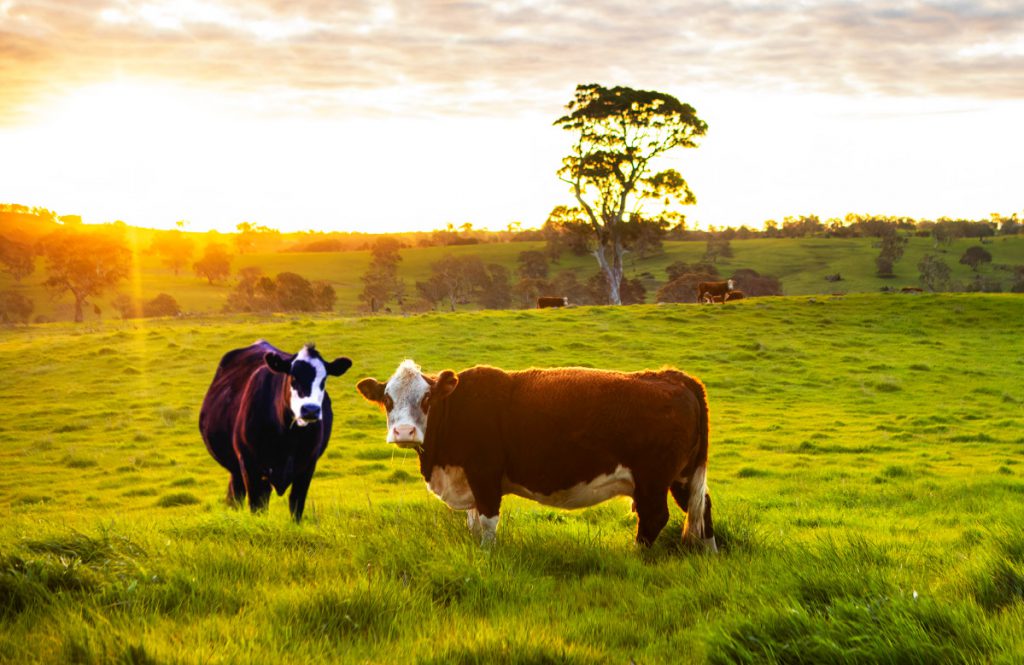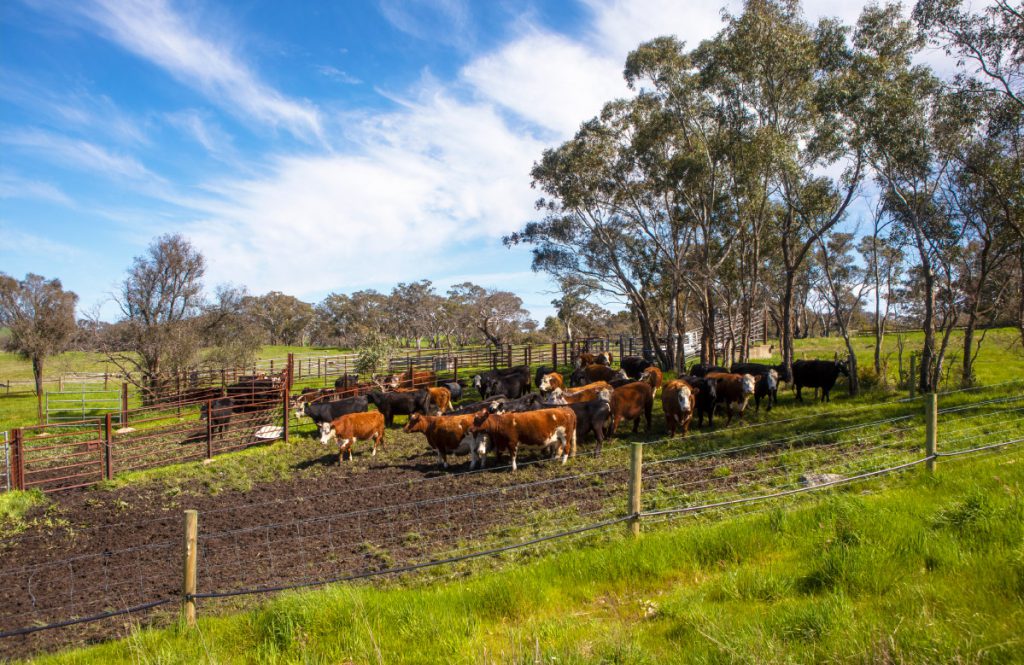In an earlier article we discussed how different grazing methods, particularly regenerative grazing, can have a material impact on the methane production and carbon emissions of farming operations. By shifting to newer practices such as regenerative grazing, the net carbon emissions of the agricultural sector can be reduced while not fundamentally altering our eating habits.
Some people might argue that we need to fundamentally change our consumption habits to address climate change, and that it is better to reduce our red meat consumption than to implement systems that deliver on-farm offsets.
While I agree in principle with this, and support the idea that we should treat meat consumption as a luxury rather than a regular dietary component, I would argue that as Saul Griffiths says in The Wires that Bind (Quarterly Review, Issue 89, 2023), cultural change is a slow process. With a mere 10-year window to address climate change, we simply don’t have enough time to make major cultural changes, and there are already solutions available that can be immediately implemented to make a difference – consumers can ask for regeneratively grown meat.
In this article we put some numbers behind the claim that regenerative grazing can offset an operation’s cattle emissions and provide some sources for these numbers.
Firstly, we need to understand that there are two sides to carbon neutral calculations. This carbon calculation is exactly the same as if you wanted to or have already calculated your own ‘carbon footprint’ or if a company needs to report its carbon balance.
On the emissions side, we need to calculate the total emissions from a farming operation. This includes diesel used to drive tractors and utes, electricity to run electric fences, workshops and so on, as well the methane emissions from all cattle, sheep and goats on the property. There are globally accepted factors to converting the greenhouse warming potential (GWP) of methane emissions to carbon dioxide (CO2), which converts a volume of methane emissions into the equivalent CO2 emission, known as CO2 equivalent (often written as CO2(e), but we will use CO2e). The GWP potential for methane is in the order of 28 times higher than for CO2, but by another measure, it stays in the atmosphere for a much shorter time – 12 years rather than centuries for CO2.
These emissions values are then added together to give us a total emission value for a farm (say X tonnes of CO2e per year).
On the carbon offset side, we need to look at all the measures that a farm operation uses to offset these emissions. These may include using solar panels to supply power as well as export it to the grid, using biofuels instead of diesel, and using methods to absorb carbon in the soils, including tree planting and regenerative grazing. We will discuss the calculation methods for these a little later in this article, but for now, let’s assume that we can calculate the total emissions for the farm as being Y tonnes of CO2e per year.
If Y is equal to X, then the operation is carbon neutral. If Y is bigger than X, then the operation is absorbing more carbon than it produces and is carbon negative. In this case, the additional carbon absorbed can be treated as a ‘carbon credit’ and theoretically sold into a carbon market by the tonne (although it is not quite that simple).
The principle of this carbon calculation is to reduce all emissions and all reduction measures into a common metric tonnes of CO2 equivalent (tCO2e), to determine whether you are carbon positive, neutral or negative.


How do we calculate the reduction measures?
While this principle is quite simple, the calculations can be difficult depending on the available science and actual measured experience of different reduction measures. And this is certainly the case with soil carbon calculations.
In terms of tree-planting and regenerative grazing, the calculations are a little less cut and dried, because there are so many variables that impact the rates, such as weather conditions during any measuring period (a drought can reduce the amount of carbon held in soils), or tree species and relative rainfall. Tree planting has been carried out for quite some time, and so there are some fairly simple rules of thumb that estimate the amount of carbon sequestration that can be achieved in a particular region, with a particular climate, accounting for particular plant species. Regenerative grazing has not been practiced for as long, so the scientific data is less detailed.
Nonetheless, some carbon project developers have started to collect real-time data on their soil carbon projects, and they are able to extrapolate this data to provide high-level estimates of the amount of carbon that can be sequestered on a particular property, if the right practices are implemented. This is the data we use for our calculations.
So what are the calculations for Taminga?
Having understood the principles, we can look at some of the figures for how we calculate our carbon balance.
On the emissions side, we use around 50L of Diesel and petrol a month, which equates to around 1,6 tCO2 per year. And about 0.4 tCO2 for electricity, though all of our water pumps are solar-powered, so total electricity use is low.
We have around 80 cows (1.5 t of CO2/yr each), 60 calves at foot (0.3 tCO2/yr) and 120 weaners (0.8 tCO2/yr). All up, this totals around 234 tCO2 equivalent in methane production, and around 2.0 t for other sources, say 240 tCO2 e per year emitted.
On the reduction side, our property is 212ha. We have fenced off around 3 ha of creek lines for revegetation, and a paddock at 3.5ha for revegetation, plus a home paddock and stockyards that we don’t graze. So, our total grazing area is about 212 less 6.5ha plus 1.5 ha, 204, but for simplicity let’s say 200ha.
To estimate the reduction capacity of our farm, we engaged a carbon developer, CarbonLink to provide us with their feasibility estimates of how much carbon the property should be able to absorb if we practice regenerative grazing consistently. CarbonLink provide professional services for farmers to develop ‘carbon projects’ which enable them to sell excess credits known as ACCUs on an Australian Government trading platform, the ERF, and we talk more about carbon developers and selling carbon credits here (link to newsblog 04). The first step that CarbonLink undertake is to complete a feasibility assessment to determine the carbon sequestration capacity. This feasibility step uses a desktop methodology which draws on their completed projects and some science to establish a high-level estimate of carbon sequestration potential. We use this data to estimate our sequestration potential, concluding that we sequester more carbon than we emit.
The data that CarbonLink have provided tells us this: farms in Australia practicing regenerative grazing methods have achieved annual sequestration rates of between 1.46 and 7.33 tCO2e per hectare, per year depending on where the operation is located. The higher rates have been achieved in higher rainfall areas, with lots of underground soil activity, including the tablelands off Queensland, and NSW. Some areas of the country such as semi-arid pastoral zones can only achieve the lower rates. CarbonLink suggest that a figure of 3.2–3.5 tCO2e/ha/yr would be achievable in the Adelaide Hills.
So, to be conservative we are targeting a sequestration rate of 3.0 tCO2e/ha/yr. This means that our maximum grazing capacity of 200ha could sequester 600 tCO2e each year, which more than offsets the estimated 240 t emitted by our cattle and diesel fuel. Conventional grazing methods by comparison, will actually emit carbon into the atmosphere by evaporation and soil loss at rates of 0.25 t/ha/yr in the same area, on top of the cattle emissions. So not only does regenerative grazing absorb significant quantities of carbon to offset methane from cows, it also halts a net loss into the atmosphere.
This is win-win for a farmers, the environment, and also for consumers because when you buy meat from farmers practicing regenerative grazing, you know that you are helping to build sustainable soils and ecosystems, and sustainably produced beef and lamb.
So how can we be more certain of the reduction capacity of Taminga rather than relying on these high-level estimates, and can we sell our surplus ‘credits’ for an income?
This is discussed in a coming future article “Carbon Farming as a Business Model”.